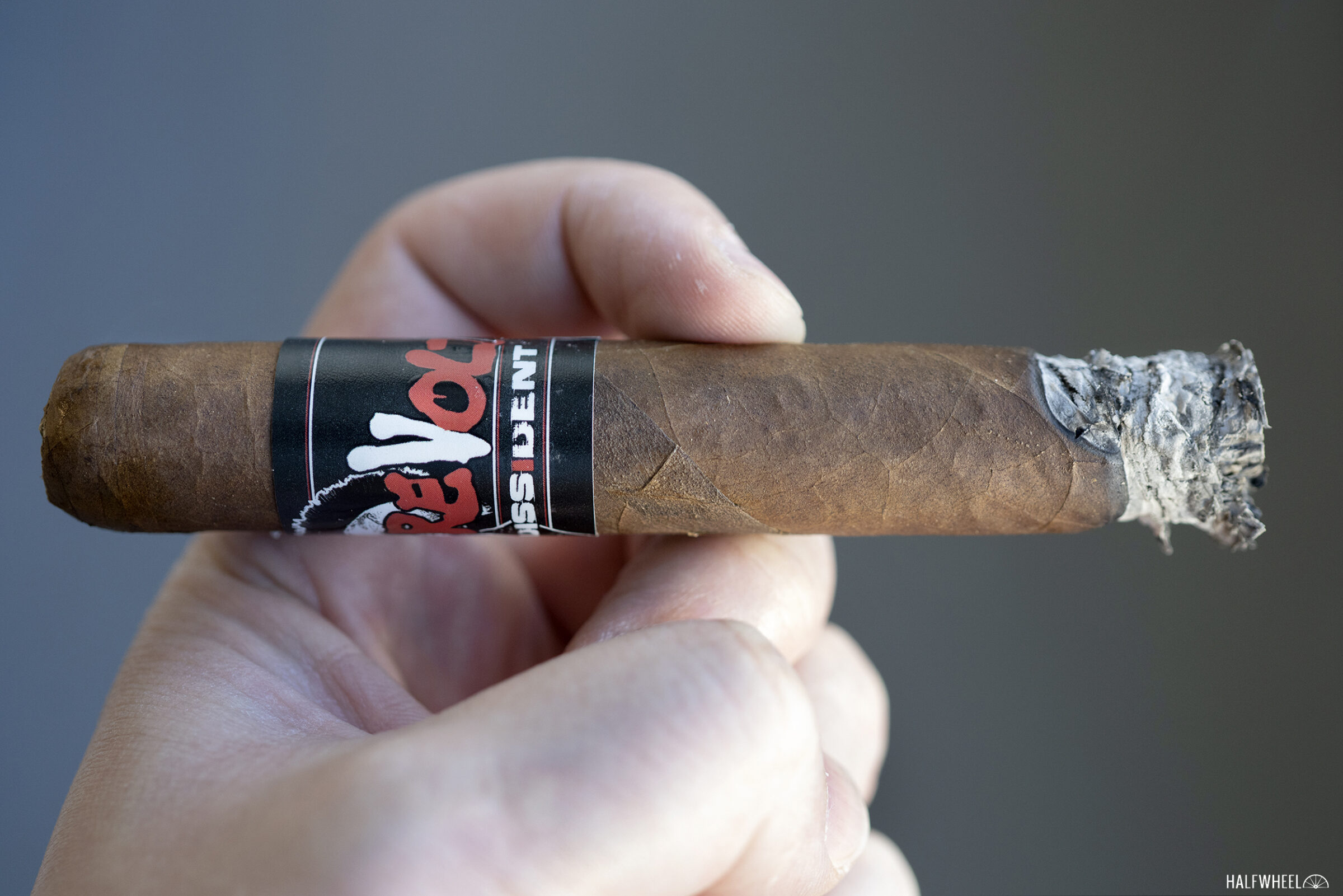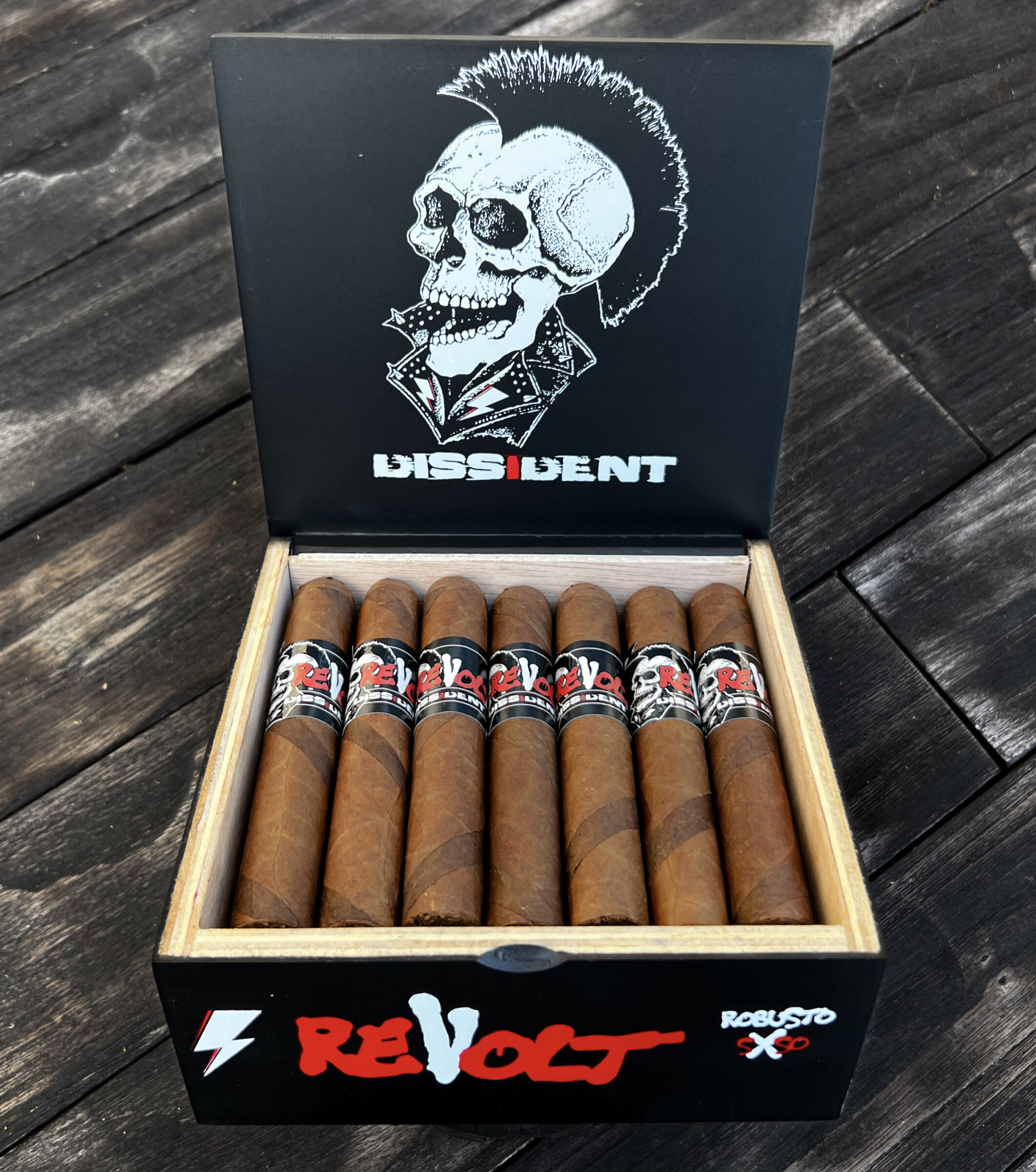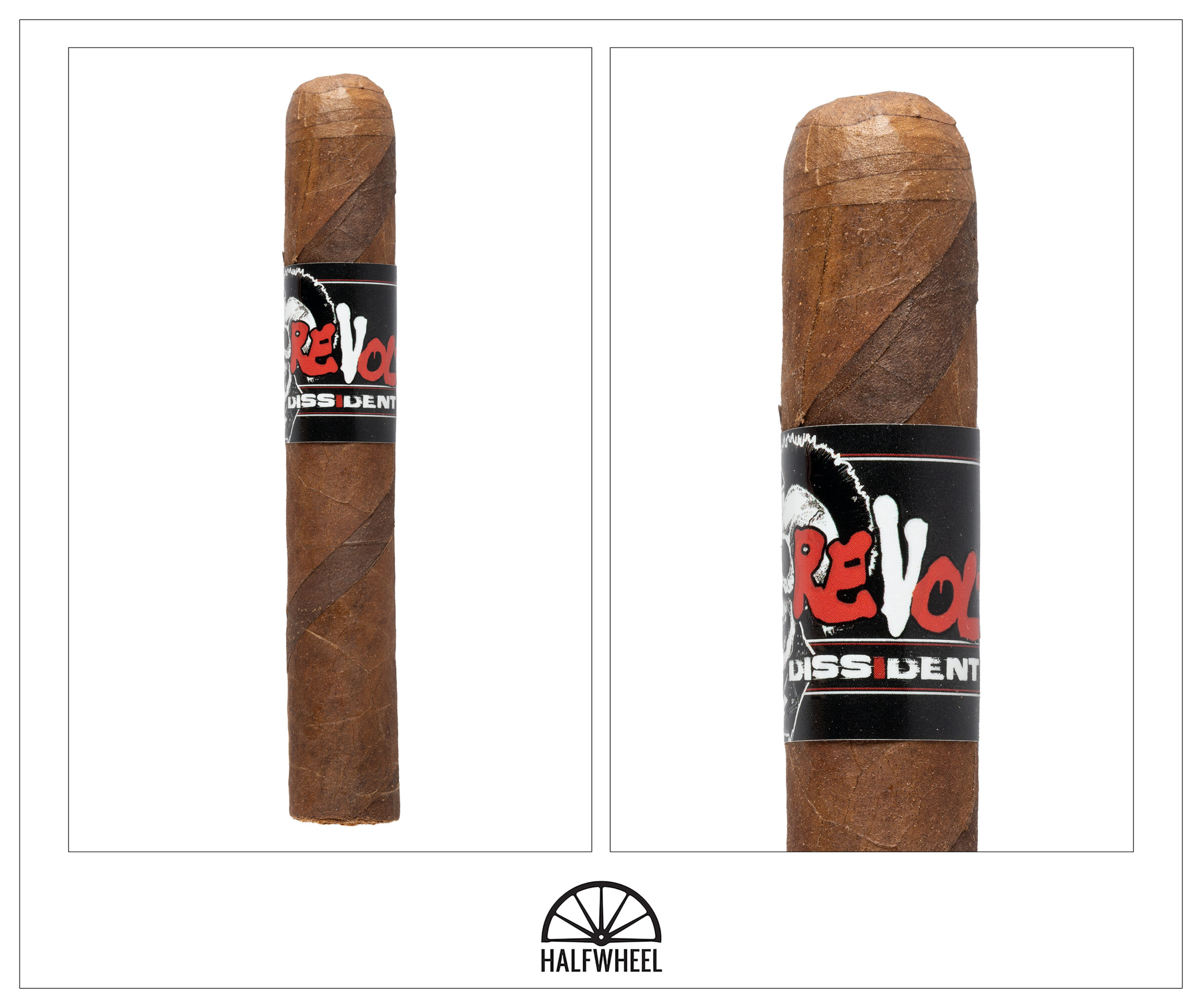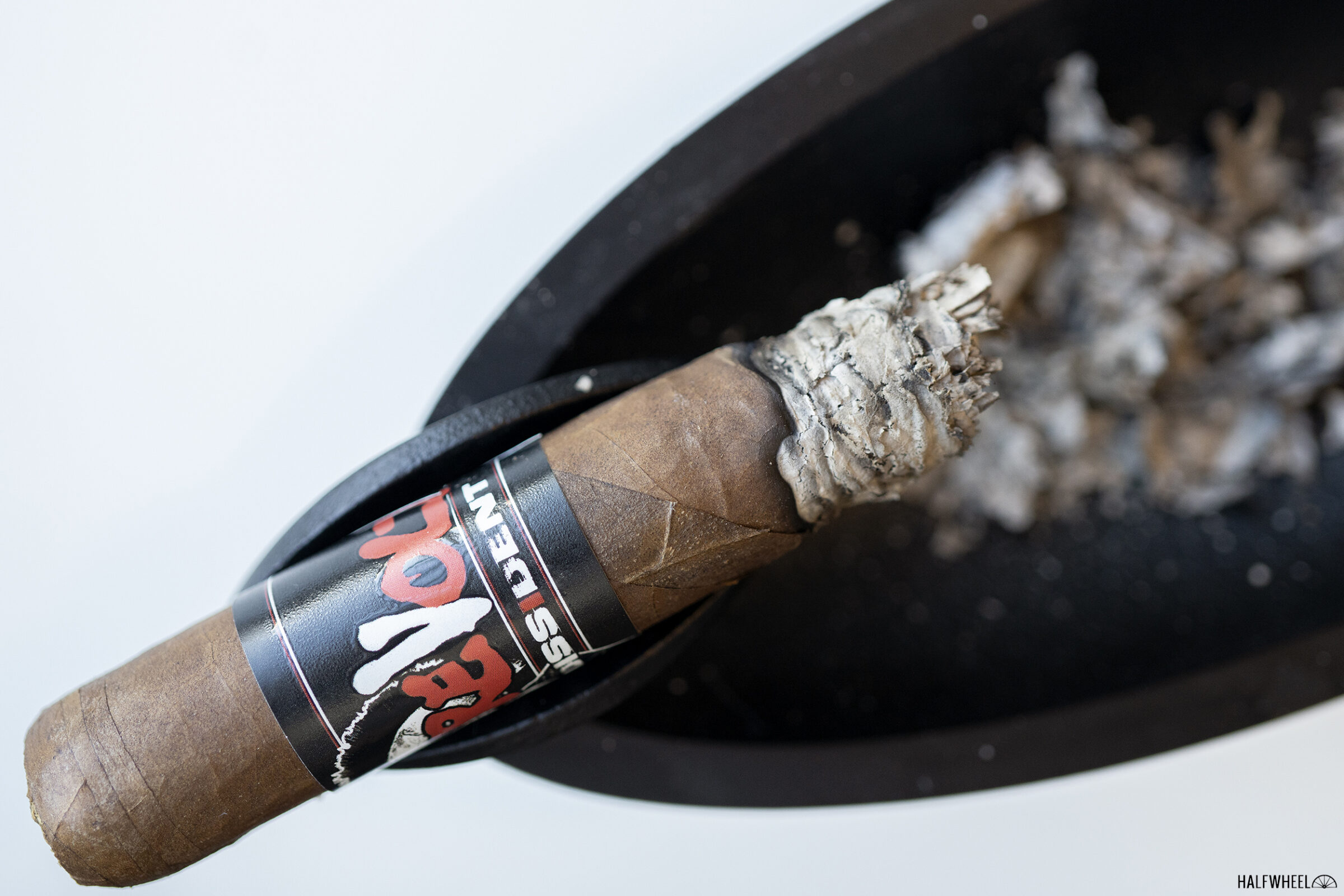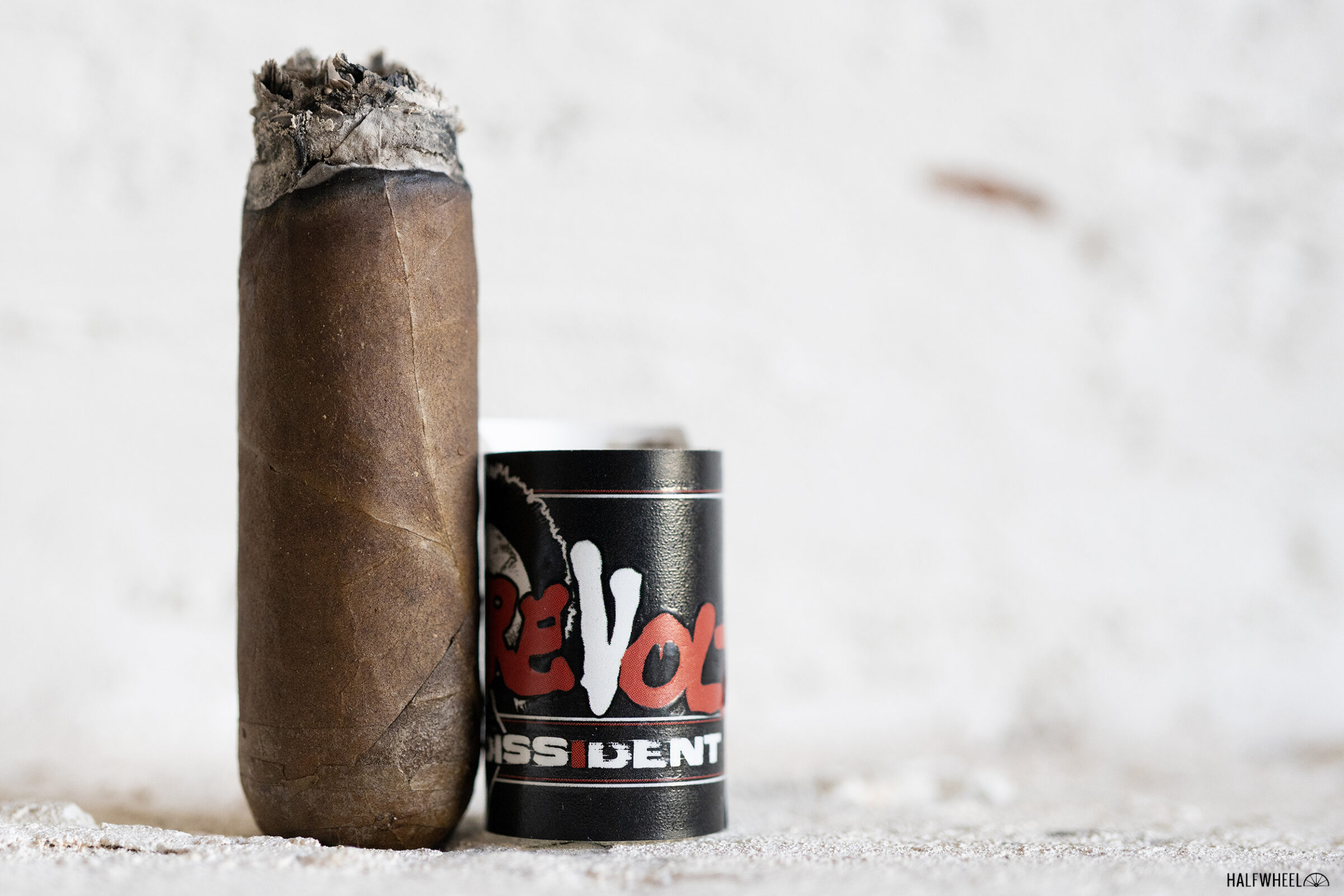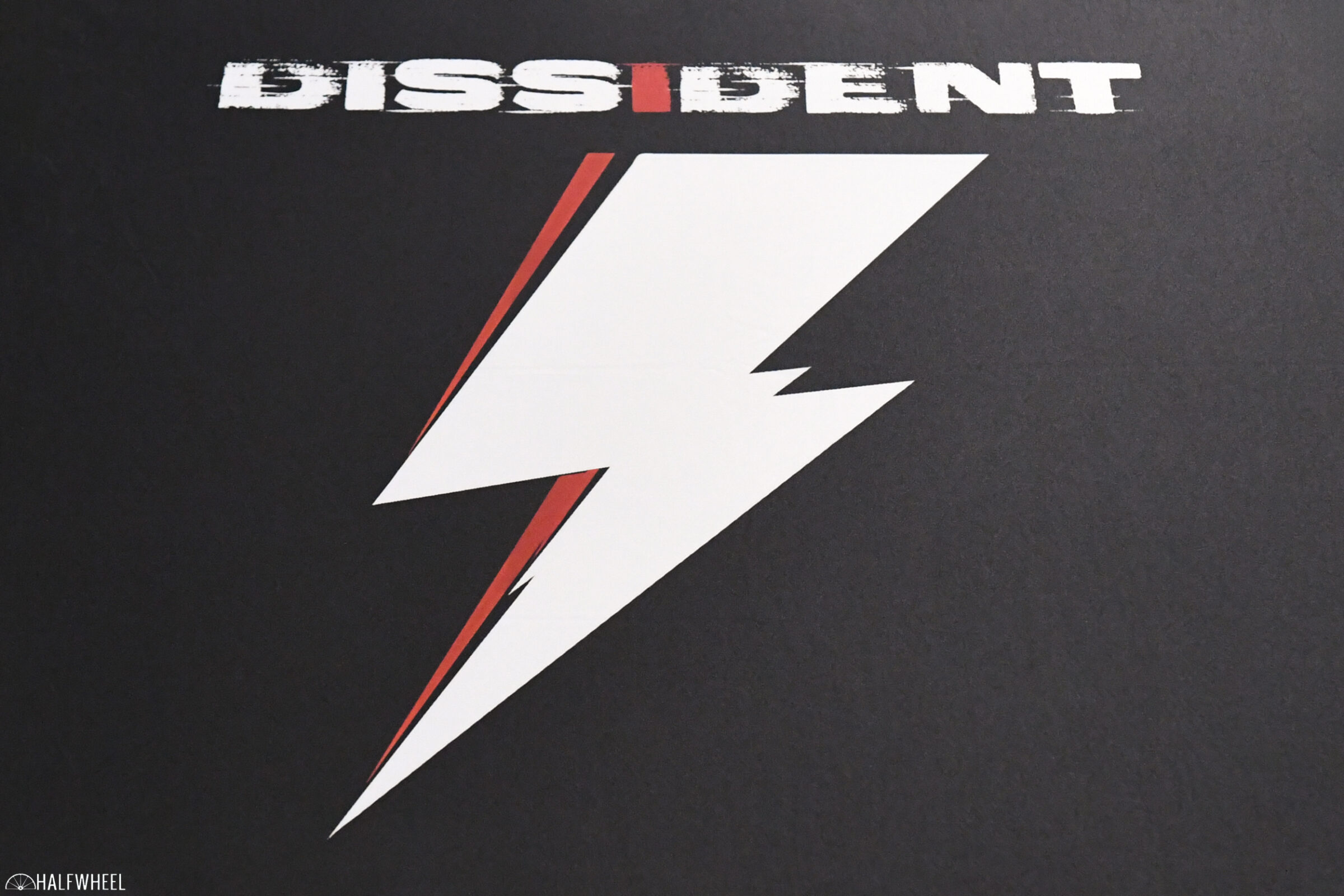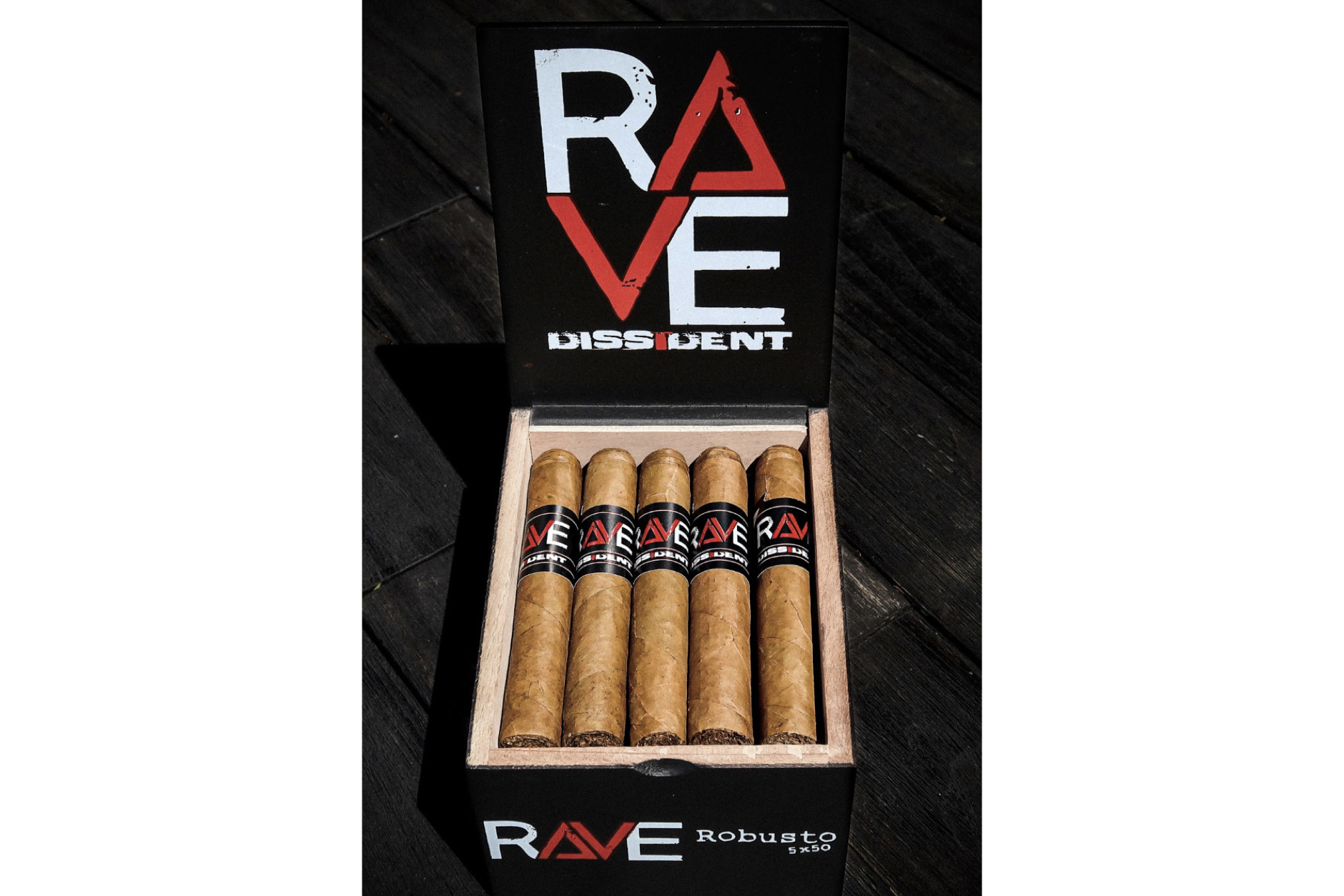Let’s say you tried the Dissident HOME but thought that it was a bit too strong. Enter ReVolt.
Over the summer, Dissident Cigars announced ReVolt, a new 5 x 50 limited edition robusto that the company says is a toned-down version of HOME 2023. On paper, the two cigars have the same basic list of components. They are both barber pole cigars, meaning they have two wrappers that appear in alternating stripes akin to a barber’s pole. Both cigars use Ecuadorian corojo and Ecuadorian maduro wrapper leaves for the design. Underneath is an Ecuadorian binder and fillers from Nicaragua. Beyond the name, packaging, dimensions—HOME 2023 was a 6 x 52 toro—and blend, one other major difference is that HOME 2023 was box-pressed, whereas ReVolt is a round cigar.
ReVolt is considered a limited edition, though Dissident has not disclosed how many cigars were made.
Like the rest of the company’s portfolio, the cigar was blended and produced at Fábrica Oveja Negra in Estelí, Nicaragua.
- Cigar Reviewed: Dissident ReVolt
- Country of Origin: Nicaragua
- Factory: Fábrica Oveja Negra
- Wrapper: Ecuador (Corojo & Maduro)
- Binder: Ecuador
- Filler: Nicaragua
- Length: 5 Inches
- Ring Gauge: 50
- Vitola: Robusto
- MSRP: $14 (Box of 20, $280)
- Release Date: July 2023
- Number of Cigars Released: Undisclosed
- Number of Cigars Smoked For Review: 3
At some point, someone should probably coin a term for this style of barber pole cigar, one where the two wrappers aren’t visibly even in terms of surface area. Offset barber pole. Uneven barber pole. Whatever you’d like to call it, it’s something that has seemingly become more and more common in the last five years. Another appearance quirk that I am finding more on new barber poles: the difference in wrapper colors is pretty subtle. Under certain lighting conditions, it’s very easy to pick up the darker and more matte brown stripe from the majority of the cigar, which gets covered in a redder and lighter brown color. However, in some lighting conditions, not even a double take will show there’s a difference. The aroma from the wrapper is unique, with a sweet artificial smell that varies between grape cough syrup to the cherry snow cone flavoring. On two cigars, it’s joined by dry grains and oatmeal, though on one cigar, the cloying sweet smell is all I can pick up. The foot is slightly more intense than the medium-full aroma from the wrappers, though the three feet don’t smell all that similar. One cigar has dry woods overtop the artificial sweetness, another cigar has just an artificial cherry smell and the third cigar has sweet grape, oatmeal and dry grains. After all that, the cold draws avoid any of the artificial sweet flavors. Dry and muddy earth leads mint, leather and a bread-like sweetness. Depending on the cigar, it’s medium-plus or medium-full, though the draws are somewhat open on all three cigars.
Perhaps the draw tightens a bit—it certainly doesn’t get worse on any cigar—but my notes for each first puff begin, “draw is open.” Beyond the less than ideal resistance, it also means the smoke volume for the first puff isn’t as much as I’d like. Flavor-wise, there are grains and muddy earth over some sweetness and leather. It’s a medium-plus or medium-full start, though incredibly smooth. Earthiness quickly takes the top spot of the profile; sometimes a generic earthiness, other times more of a freshly rained-on mud character and sometimes it has more mineral aspects. Underneath are bread, cocoa, barrel-like woodiness and some mild cake batter. Each puff is remarkably consistent, with the only way to change the flavors seeming to be to adjust how much smoke I draw and how long I keep that smoke in my mouth. The finish has more of the barrel and vanilla cake batter flavors, but it’s still quite earthy. When not blowing smoke through my nose, the profile is remarkably rich and smooth. Retrohaling produces more mineral flavors along with some dry fall leaves, which creates a slightly more abrasive flavor, though that probably says more about the non-retrohale puffs than anything else. The finish shows the first real sign of harshness as a harsher straw flavor enters the fray, joining the mineral, fall leaves and cake batter flavors. Flavor is close to full, body is medium-plus and strength is medium. The draw could be a tad bit tighter, but it doesn’t seem to be impacting smoke production—there’s still plenty—or combustion. Its only real impact up until this point is that I’m having to puff at a quicker rate than normal, but it’s not like that’s heating up the cigar.
For better and worse, there are no major changes during the second third of the Dissident ReVolt. Earthiness—in its multi-faceted ways—still leads the way, with leather, drier nuttiness and grains underneath. With the addition of those flavors and the disappearance of the cake batter sweetness, it seems like the profile is toastier, though I’m not tasting any real toasty flavors. That is until the finish, when the earthiness gets a defined toasty accent. It’s joined by peanuts, saltiness and a restrained sharpness. Retrohales add even more of the toastiness, which seems to dictate which other flavors can show themselves as the earthiness shifts to just being the freshly rained-on mud flavor. About 15 seconds after the smoke has left my nose, I find some pretzel-like flavors, albeit without any of the saltiness. Flavor is full, body is medium-full and strength is medium-plus. While the draw is still somewhat open, the lone construction issue is likely unrelated: an uneven burn that requires corrections for two cigars.
If the ReVolt was going to follow a linear progression—which would have been predictable—it would involve the final third being toastier and sharper than the second third. Instead, the profile shifts back towards sweetness. The toastiness doesn’t go away—it’s still intertwined with the earthy flavors at the top of the profile—but the peanut flavor from the second third plays a much larger role. Secondary notes include sawdust, citrus, vanilla cake batter and some generic sharpness. The finish has even more of the tastiness and citrus, though earthiness remains the strongest flavor. Retrohales see the peanuts overtake the earthiness—the first time that consistently happens—to create the smoothest retrohale experience of the cigar. Eventually, that smoothness is disrupted by some bitterness, but the overall effect is similar to the second third: for about 15 seconds, the retrohale’s finish is more or less the same as when the smoke was there. Flavor is full, body is medium-full and strength is medium-plus. While smoke production dips as the cigar gets close to the end, it never drops enough to necessitate another touch-up.
Final Notes
- The wrapper aroma gave me pause. If I didn’t know any better, I thought I was about to smoke a flavored cigar. Once I took a cold draw, those concerns were rested, but it was a distinct sweetness that is not typically found on non-flavored cigars.
- I found the first third to be incredibly smooth, the second third to add some sharpness and the final third to be a combination of the two: smooth but with a defined sharp note.
- The retrohales were pretty unique. Typically I find a difference between what I can taste when the smoke is in my nose or has just left and the 5-10 seconds that follow. That was not the case here, though after 15 or 20 seconds, I noticed things had changed slightly.
- This is a cigar that has a few core flavors—earthiness, nuttiness, toastiness and an inconsistent sweetness—that it executes very well. There’s not much else, but I’m not sure there needs to be.
- It’s also a cigar that requires nearly no work to find these flavors. What flavors the cigar has are pretty easy to find and understand. Furthermore, while there are some subtle flavors, they don’t seem to add much to the overall profile.
- Cigars for this review were purchased by halfwheel.
- Final smoking time was a relatively quick one hour and 30 minutes on average, no doubt influenced by the open draw.
Bold, not quite brash, the Dissident ReVolt is a simple yet very refined experience. While there’s little similarity in terms of the individual flavors or even overall complexity, I find this cigar to have an attribute that I most associate with Arturo Fuente’s Don Carlos: what it does, it does very well. The ReVolt is led by a somewhat wide range of earthy sensations alongside some nuttiness, toastiness, sharpness and quite frankly, not much else. I’m not sure much else is really needed: this recipe has a ceiling, but it works quite well. There are going to be some people that fall in love with the flavors and how well they are executed, along with the easy draw. If this was a regular production cigar, I could see this becoming an every day cigar for some.

